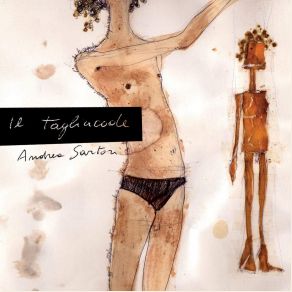Il Tagliacode
Download links and information about Il Tagliacode by Andrea Sartori. This album was released in 2007 and it belongs to Electronica, House, Techno, Dancefloor, Dance Pop, Alternative genres. It contains 11 tracks with total duration of 01:00:40 minutes.

|
|
|---|---|
| Artist: | Andrea Sartori |
| Release date: | 2007 |
| Genre: | Electronica, House, Techno, Dancefloor, Dance Pop, Alternative |
| Tracks: | 11 |
| Duration: | 01:00:40 |
| Buy it NOW at: | |
| Buy on iTunes $9.99 | |
| Buy on iTunes $7.99 | |
Tracks
[Edit]| No. | Title | Length |
|---|---|---|
| 1. | Supertele | 5:20 |
| 2. | Uova Di Gatto | 4:28 |
| 3. | Santa Chimera | 5:50 |
| 4. | Il Tagliacode | 7:06 |
| 5. | Rompi Capo | 4:28 |
| 6. | Ehi Amigo Serve Un'Autoradio | 4:06 |
| 7. | Horror Vacui | 10:01 |
| 8. | Oltre Il Profondo | 5:55 |
| 9. | Prima Le Signore | 8:02 |
| 10. | Vodkatronic | 4:20 |
| 11. | Outro | 1:04 |
Details
[Edit]Andrea Sartori's first full-length album is a sprightly affair, generating the feeling of a home-recorded solo electronic venture out of a series of live collaborations and pieces recorded with other musicians. This isn't a criticism but praise — by drawing on these pieces to reassemble in collages as he sees fit, Sartori adds a live but still fragmented and carefully arranged feel to the entirety of Il Tagliacode, making it a release neither here nor there. Rearranged performances like this are hardly new in recorded music, of course, but Sartori's ear for the playful and rollicking — comparisons to figures like Raymond Scott, Yello, and Boards of Canada aren't out of place — helps make the album a fun and often frenetic treat. So the glitch beats on "Uova di Gatto" get clipped sonic bursts cutting across the mix in ways Akufen could approve of without actually sounding like that figure's work at all, while the crisp metallic bite and low synth crunch of "Ehi Amigo Serve Un'autoradio?" and the understated suave flow of "Wodkatronik," helped by acoustic guitar parts chopped and reused as needed, show his skill equally well. Where thicker, more "live" beats come into play, Sartori often does a lovely job at creating nearly soundtrack levels of suggestive atmosphere — debts, in some cases obvious ones, to John Barry and Angelo Badalamenti's exquisite atmospheres ("Santa Chimera" is a fine example), but no less enjoyable for that reason. Meanwhile, calmer numbers in general are often so only by default, as the shimmering overlay of tones and understated hooks that starts "Prime le Signore" still kicks with a clear energy, one that the brisk, full-bodied 4/4 beat that later emerges only makes all the stronger.